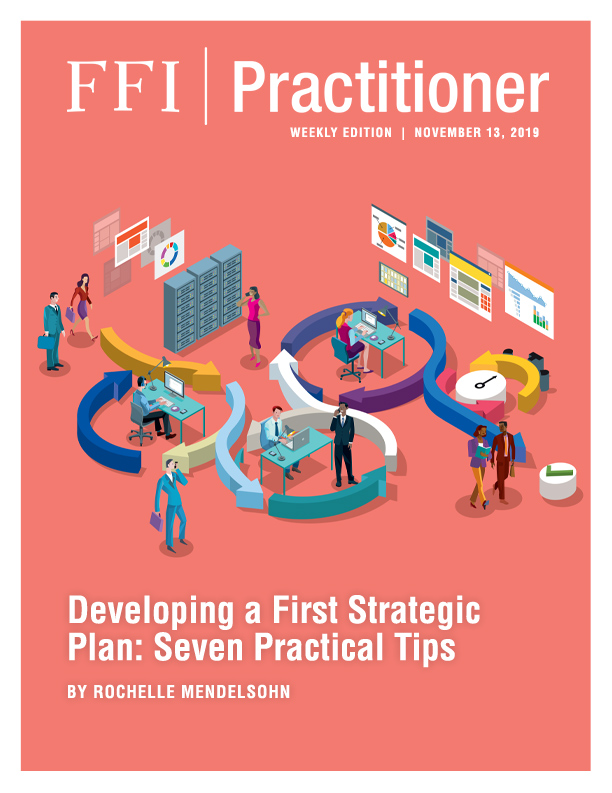Developing a First Strategic Plan: Seven Practical Tips

One such faulty assumption is, “You would think a profitable, growing second or third generation family enterprise would have engaged in strategic planning along the way.” It’s more common than many think to encounter a family enterprise with a 30, 40 or 50-year history facing changing conditions that prompt its leadership to consider developing a strategic plan for the first time.
Changes that motivate an enterprise to consider developing its first strategic plan may be internal – related to ownership succession, management succession, a cluster of legacy employees approaching retirement at once, a product line facing future irrelevance, innovation drying up, infrastructure become outdated, or a range of other conditions. The motivational changes may also, or alternatively, be driven by external change – stemming from industry consolidation, technology developments, competitive disruption, regulatory conditions, supplier dynamics, economic outlook, or the political environment.
Despite compelling reasons to develop a first strategic plan, the planning process can seem complicated, time-consuming, burdensome, and potentially intimidating. There are multiple strategic planning models to consider using, such as a Balanced Scorecard, OKR (Objectives and Key Results), Porter’s Five Forces, Blue Ocean, and other approaches. There is a lexicon full of ubiquitous terminology, making it difficult for strategic planning newcomers to understand clearly the type of content they will be developing and how they will organize or structure it. References to objectives vs. goals vs. priorities or strategies vs. tactics vs. initiatives create unnecessary confusion around what are often merely different ways of describing generally similar planning concepts. And within family enterprise, there is another layer of complexity related to the intersection of family and business. Specifically, family enterprise leaders may be hesitant to enter into a strategic planning process that will need to address, and therefore shine a light on, challenging family dynamics embedded in the business.

“Above all, recognize that just as much value, if not more, is derived from the data-driven insights, discussions, and pursuit of alignment during the planning process as is derived from the final plan ultimately developed.”
Too often, perceived process complexities can delay or stop an organization from developing its first strategic plan. Yet the power from a plan can only be reaped from a process that begins. General George S. Patton said, “A good plan, violently executed now, is better than a perfect plan next week.” Those of us who lead organizations through strategic planning have an opportunity to simplify and clarify planning expectations, thereby promoting sooner starts and completions of first strategic plans. In that spirit, I offer 7 practical tips for organizations considering development of their first strategic plan.













As Mark Twain noted, “The secret of getting ahead is getting started.” Similarly, I propose the secret of unleashing the potential of strategic planning is getting started on the first plan. Future plans will build off the foundation of the first plan, enabling the enterprise to position itself for even greater success over the long-term. It all begins by starting to develop a first strategic plan; and reducing the amount or level of perceived planning process complexity can help an enterprise take that first crucial step.

Related Article

“Launching the Parallel Planning Process: Aligning family and business systems” by Randel Carlock and Keng-Fun Loh

